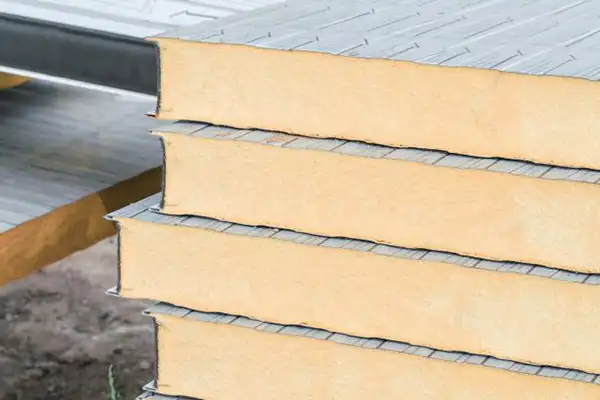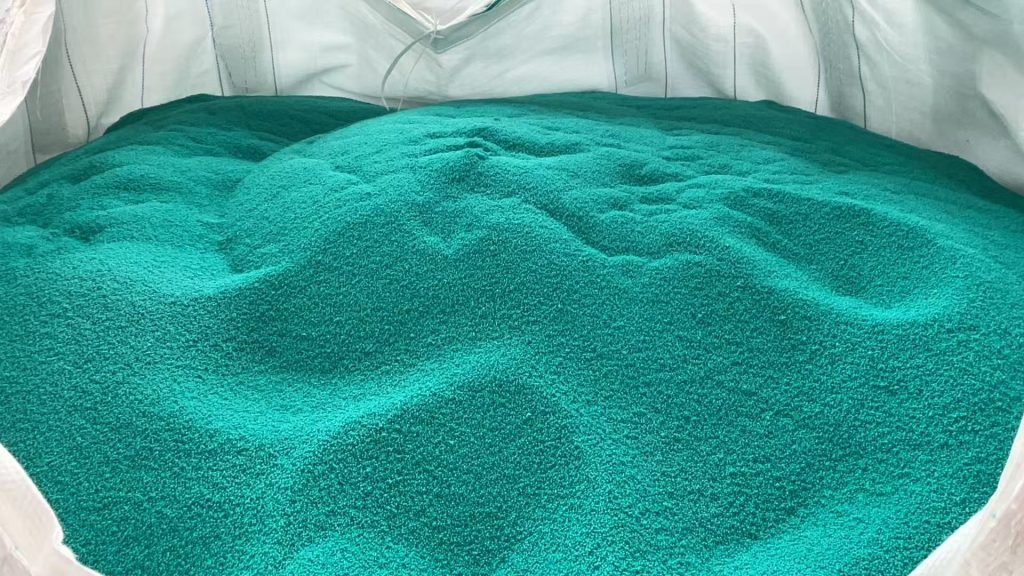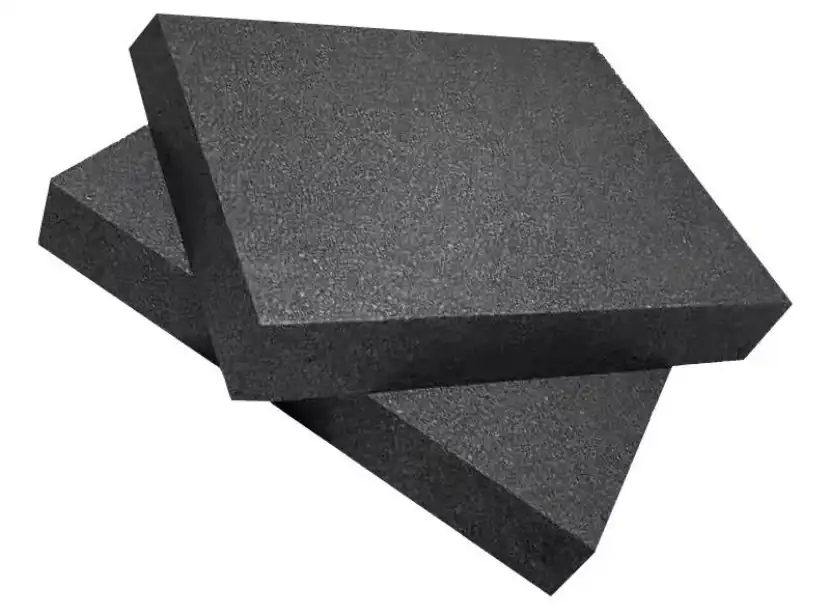Polystyrène expansé (EPS) est un matériau léger et flexible largement utilisé dans l'emballage, l'isolation et les projets de construction. Beaucoup de gens se demandent comment il résiste dans des endroits humides ou humides. Cet article examine si le polystyrène expansé peut manipuler l'eau, comment il agit dans des milieux humides et ce qui affecte sa capacité à résister à l'humidité.

Qu'est-ce que le polystyrène expansé (EPS)?
Le polystyrène expansé est une mousse avec de minuscules cellules fermées. Il est fait en chauffant les perles de polystyrène avec de la vapeur pour les faire croître et coller ensemble.
Composition et structure de l'EPS
L'EPS est principalement de l'air - environ 98% - avec seulement 2% de polystyrène. Ce mélange le rend super léger et idéal pour garder les choses chaudes ou fraîches. Les perles sont toutes de la même taille, ce qui les aide à couler en douceur lors de la mise en forme. Ils durcissent rapidement, sortent facilement des moules sur les machines automatiques et refroidissent rapidement avec des systèmes à vide. Le produit final se colle bien et peut prendre un coup sans se casser.
Applications communes des produits EPS
EPS apparaît dans de nombreux endroits. Il protège l'électronique, la céramique et les aliments dans l'emballage. Il est également utilisé pour l’isolation dans les bâtiments, les flotteurs pour la pêche et pour garder les choses froides pendant l’expédition. Il fonctionne bien dans les machines de moulage automatiques, et celles électriques sont encore plus rapides.
Interaction de l'eau avec le polystyrène expansé
Pour comprendre comment l’EPS traite l’eau, nous devons examiner sa structure et son comportement dans différentes situations humides.
Comment réagit l'EPS lorsqu'il est exposé à l'humidité
L’EPS n’absorbe pas l’eau comme une éponge. Mais si elle reste dans l'eau pendant longtemps, un peu d'eau pourrait se glisser entre les perles. Il résiste assez bien à l'humidité pendant de courtes périodes, mais une exposition prolongée peut laisser entrer un peu d'eau.
Le rôle de la structure à cellule fermée dans la résistance à l'eau
La conception à cellule fermée de l'EPS est essentielle. Chaque cellule est scellée, donc l'eau a du mal à entrer à l'intérieur. Cette configuration maintient la plupart de l'humidité dans des conditions normales. C’est pourquoi l’EPS reste fort même dans des endroits légèrement humides.
Différences entre contact à court terme et exposition à long terme
Un éclaboussement rapide ou une pluie ne nuiront pas beaucoup à l’EPS. Il reste fort et fonctionne bien. Mais s’il est sous l’eau ou en contact constant avec l’eau pendant des jours, il peut devenir un peu plus lourd. Une certaine quantité d'eau peut se piéger entre les perles, ce qui pourrait légèrement affecter les performances.
Facteurs influant sur la résistance à l'eau de l'EPS
La façon dont l’EPS maintient l’eau dépend de quelques choses, comme son maquillage et l’environnement dans lequel il se trouve.
Densité et épaisseur des matériaux EPS
L'EPS plus épais et dense est mieux à arrêter l'eau. Il a moins d'écarts entre les perles. Les options à haute densité, comme celles à 18 kg/m³ ou plus, telles que les grades de graphite ou de noir de carbone, fonctionnent parfaitement dans les endroits humides. Ils sont robustes et fiables.
Conditions environnementales et scénarios d'utilisation
Des choses comme l'humidité, les changements de température et la matière de contact direct avec l'eau. Dans les projets d'expédition à froid ou de construction souterraine, où l'eau peut se rassembler ou se condenser, choisir le bon grade EPS est très important. Le mauvais choix peut entraîner des problèmes.
Traitements de surface et revêtements
Certains EPS obtiennent des revêtements spéciaux qui repoussent l'eau. Ceux-ci sont parfaits pour des choses comme le toit, où la pluie et le temps frappent dur. Les revêtements agissent comme un bouclier, empêchant l'eau de s'infiltrer.
Performance de différents grades d'EPS dans des environnements humides
Toutes les EPS ne sont pas les mêmes. Différents types manipulent l'humidité à leur manière.
EPS de grade commun et son comportement dans des conditions humides
Le matériau standard E est un type populaire d'EPS de qualité commune. Il est utilisé pour emballer l’électronique, isoler les murs ou fabriquer des flotteurs de pêche. Il est solide pour une utilisation quotidienne, mais peut nécessiter une protection supplémentaire dans des endroits très humides. Sans revêtement, ce n’est pas le meilleur pour une humidité constante.
Grade retardant à la flamme: sécurité ajoutée avec des considérations d'humidité
Grade retardant de flamme F est certifié par le Laboratoire d'essai de sécurité des États-Unis (UL). Il est stable et sûr, avec un taux de mousse de 35 à 75 fois. Cela le rend idéal pour les bâtiments où la sécurité incendie et une certaine résistance à l'humidité sont nécessaires. Il résiste bien dans les réglages humides si installé correctement.

Graphite Grade: Isolation améliorée et résistance à l'eau
Les grades de graphite, comme le S-32 et le S-33, sont spéciales. Ils utilisent des particules de graphite pour bloquer la chaleur et garder les choses fraîches. Leur conductivité thermique est très faible, inférieure à 0,033W/M.K pour le S-33. Ces qualités sont plus denses, donc l’eau a plus de mal à pénétrer. Ils sont parfaits pour les environnements difficiles et humides.
Grade de protection de l'environnement : choix durables et rendement de l'eau
Ces grades utilisent des retardants de flamme non HBCD, qui sont meilleurs pour la planète. Ils adhèrent bien et sont parfaits pour l'isolation des murs extérieurs. Ils répondent aux normes strictes de l'UE REACH et restent résistants même en cas de pluie ou d'humidité.
Catégorie noir de carbone: résistance aux UV et tolérance à l'humidité
Les qualités de noir de carbone, comme le matériau FGE, ont une faible conductivité thermique et des caractéristiques antistatiques impressionnantes. Ils sont conçus pour des produits à haute densité (18KG/M³ ou plus). Ces grades résistent aux rayons UV et gèrent bien l’humidité, de sorte qu’ils ne se décomposent pas facilement dans des conditions humides ou ensoleillées.
Applications pratiques où la résistance à l'eau est importante
La résistance à l'eau est une grande chose pour l'EPS dans de nombreuses industries. Voilà où ça compte vraiment.
Utilisation dans les systèmes de construction et d'isolation
Connecter l'utilisation de construction à des applications d'isolation de qualité inférieure.
Applications d'isolation et de fondation de qualité inférieure
Les zones souterraines, comme les sous-sol, traitent souvent des eaux souterraines. Les grades améliorés par le graphite ou retardants à la flamme sont le choix ici. Ils sont plus denses et plus forts - plus de 20% plus résistants que les autres grades. Cela les rend parfaits pour supporter des charges lourdes tout en gardant l'eau dehors.
Isolation du toit exposée aux éléments météorologiques
Les toits sont frappés par la pluie et la neige tout le temps. La qualité retardante de flamme standard FSH-européenne est un choix privilégié. Il consomme moins d'énergie pour le traitement, moule rapidement et manipule bien la vapeur. Cette qualité résiste aux intempéries difficiles sans rompre la sueur.
Solutions d'emballage qui rencontrent de l'humidité pendant le transit
Répondre aux défis liés à l'humidité dans l'emballage alimentaire et la logistique de la chaîne froide.
Emballage alimentaire et logistique de la chaîne froide
Le stockage à froid peut être humidé par la condensation. Le B-301, un grade de prototypage rapide, est génial ici. Il moule rapidement et se refroidit rapidement avec des systèmes à vide. Cela empêche l'humidité de coller pendant l'expédition, protégeant les aliments ou autres marchandises.
Emballage électronique dans des climats humides
L'expédition d'électronique dans les zones humides est difficile. Les qualités de noir de carbone, avec leurs pouvoirs antistatiques, sont parfaites. Ils restent stables et résistent à l'humidité, en gardant les appareils sensibles en sécurité même dans les climats humides.
Conseils d'entretien et de manutention pour les conditions humides
Prendre soin de l'EPS correctement l'aide à rester fort, même lorsque l'eau est autour.
Stockage approprié pour éviter une exposition prolongée à l'eau
Conservez EPS à l'intérieur, loin de la pluie ou du soleil. Conservez-le à moins de 25 degrés Celsius et loin des flammes. Cela maintient le matériau en bonne forme pendant longtemps.
Techniques d'installation qui minimisent les risques d'humidité
Lors de la mise de l'EPS dans des endroits extérieurs ou souterrains, utilisez des barrières imperméables ou des agents d'étanchéité sur les bords. Assurez-vous que l’eau peut s’éloigner des fondations ou des toits. Cela empêche l'humidité de s'accumuler et de causer des problèmes.
Méthodes de séchage si EPS devient mouillé
Si l'EPS est mouillé pendant l'expédition ou l'installation, laissez-le sécher à l'air libre. Sa structure à cellules fermées n’absorbe pas beaucoup d’eau, donc elle sèche généralement sans endommagement. Il suffit de lui donner du temps avant de le sceller à l'intérieur des murs ou d'autres espaces serrés.
Présentation de HUASHENG comme fournisseur fiable d'EPS
HUASHENG fournit une large gamme de produits en polystyrène expansé pour toutes sortes de besoins, de l'emballage simple aux matériaux de construction lourds.
Aperçu de la gamme de produits de HUASHENG
HUASHENG offre:
- Classe commune: Matériel P-extra léger, qualité de prototypage B-Rapid, matériau standard E
- Grade retardant la flamme: Série de matériaux retardants de flamme F, y compris le matériau de qualité retardant de flamme FB-léger
- Graphite de qualitéMéthode de suspension FGE & Méthode d'extrusion polystyrène graphite série S
- Protection de l'environnement: FHE-N-HBCD et Matériaux retardants de flamme en graphite FGH-N-HBCD
- qualité noir carbone: Polystyrène carbone à faible conductivité thermique polystyrène noir FGE matériaux
- REPS personnaliséDéveloppé pour répondre aux besoins spécifiques des clients

Engagement envers la qualité et les capacités de personnalisation
En 2015, HUASHENG a introduit des équipements avancés de polystyrène graphite - une extrudeuse à double vis en Europe. Cela leur permet de régler la densité, les tailles des perles et les ratios de mousse pour s'adapter parfaitement à tout projet. Leurs produits sont fabriqués avec précision et soin.
Portée mondiale et assistance à la clientèle
Les produits ignifuges de HUASHENG sont certifiés UL (numéro de document E360952). Ils servent leurs clients dans le monde entier avec des équipes de support utiles. De la planification à la livraison, HUASHENG est là à chaque étape du chemin.
Questions fréquentes
Q1: Le polystyrène expansé peut-il absorber l'eau comme une éponge?
R : Non. L’EPS n’agit pas comme une éponge. Une partie de l’eau peut rester entre les perles si elle est humide pendant longtemps, mais ses cellules fermées empêchent la plupart de l’eau d’entrer à l’intérieur.
Q2: Le polystyrène expansé convient-il à l'usage extérieur?
R : Oui. Graphite amélioré ou les qualités retardantes de flamme fonctionnent bien à l'extérieur. S'ils sont correctement installés, ils gèrent le temps comme des champions.
Q3: Que dois-je faire si mon emballage EPS se mouille pendant l'expédition?
R: Laissez-le sécher à l'air avant de l'utiliser à nouveau. Puisque l’EPS n’absorbe pas beaucoup d’eau, il sèche généralement fin et reste fort.






